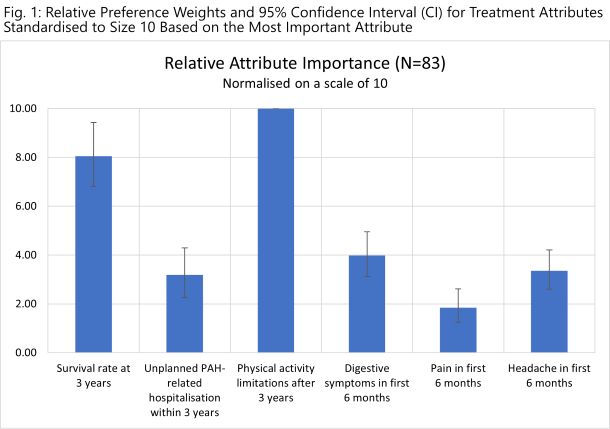Abstract
Introduction: PAH is a progressive condition characterized by increasing limitations on physical activity, right heart failure, and premature mortality. Management of PAH requires active partnership of patients and clinicians.
Objective: To understand patient preferences regarding medical treatment of PAH.
Methods: Adult PAH patients with self-reported activity limitations [WHO functional class (FC) II/III] were recruited via a patient organization in Germany to complete an online preference survey using a Best-Worst Scaling case 3 approach. Each of 12 choice questions required selection of ?best? and ?worst? between 3 treatment profiles, where levels of benefits and side effects varied systematically. Relative preferences were assessed using a random parameters logit model, and relative importance was normalised (10-point scale).
Results: PAH patients (n=83, 76% female; median age 58 yrs [range:27,91]; 72% FC II, 28% FC III) assigned the most importance to physical activity limitations and survival (Fig 1). Unplanned PAH-related hospitalisation and side effects were relatively less important. Preference heterogeneity was detected.

Conclusions: In this PAH preference study, patients gave greatest importance to 3-year physical activity limitations and survival and less importance to 6-month side-effects when choosing a treatment regimen. Patient preferences should be considered in setting up personalised treatment plans in PAH.